A Fast Element-Free Galerkin Method for 3D Elasticity Problems
Zhijuan Meng,Yanan Fang and Yumin Cheng
1School of Applied Science,Taiyuan University of Science and Technology,Taiyuan,030024,China
2Shanghai Key Laboratory of Mechanics in Energy Engineering,Shanghai Institute of Applied Mathematics and Mechanics,School of Mechanics and Engineering Science,Shanghai University,Shanghai,200072,China
ABSTRACT In this paper,a fast element-free Galerkin(FEFG)method for three-dimensional(3D)elasticity problems is established.The FEFG method is a combination of the improved element-free Galerkin(IEFG)method and the dimension splitting method(DSM).By using the DSM,a 3D problem is converted to a series of 2D ones,and the IEFG method with a weighted orthogonal function as the basis function and the cubic spline function as the weight function is applied to simulate these 2D problems.The essential boundary conditions are treated by the penalty method.The splitting direction uses the finite difference method(FDM),which can combine these 2D problems into a discrete system.Finally,the system equation of the 3D elasticity problem is obtained.Some specific numerical problems are provided to illustrate the effectiveness and advantages of the FEFG method for 3D elasticity by comparing the results of the FEFG method with those of the IEFG method.The convergence and relative error norm of the FEFG method for elasticity are also studied.
KEYWORDS Improved element-free Galerkin method;dimension splitting method;finite difference method;fast element-free Galerkin method;elasticity
1 Introduction
The 3D elasticity problem is one of the typical mechanical problems in engineering.Because of the complexity of this type of problems,it is difficult to get the analytical solution when the problems are defined in complicated domains.Therefore,the study of the numerical method for 3D elasticity has important theoretical and practical significance.At present,lots of methods have been applied to simulate elasticity problems,such as the finite element method(FEM)[1],finite difference method[2],boundary element method(BEM)[3]and meshless method[4-7].
The meshless method has been an important numerical method for scientific and engineering problems[8-13].When using the meshless method to solve problems,only discrete nodes need to be distributed in the problem domain and on the boundary.Furthermore,different problems can flexibly distribute the quantity of nodes according to the characteristics.Therefore,the meshless method has good adaptability and high calculation accuracy.It is more suitable for solving those complex problems,for example,crack growth,super large transfiguration and high-speed collision.
The IEFG method is one of the important meshless methods.The shape function is constructed using the improved moving least-squares(IMLS)approximation[14,15].The IMLS approximation is based on the ordinary least-squares method which has high accuracy and has been applied in various fields [16-18].Furthermore,the basis functions of the IMLS method are weighted orthogonally.Compared it with the classical element-free Galerkin method,the IEFG method has fewer coefficients,and the computational speed is faster.Zhang et al.used the IEFG method to simulate 3D heat conduction problems[19],3D potential problems[20]and 3D wave propagation[21].Ma et al.used the IEFG method to simulate groundwater pollution prevention and control and its application in fluid flow[22].Peng et al.used it to simulate 3D viscoelasticity problems[23].Zheng et al.used it to simulate diffusional drug release problems[24].Yu et al.used it to simulate three-dimensional elastoplasticity problems[25].Liu et al.used it to simulate elastic large deformation problems[26]and inhomogeneous swelling of polymer gels[27].Cai et al.used it to simulate elastoplasticity large deformation problems[28].Wu et al.used it to simulate the elasticity[29].Zou et al.used it to simulate fracture problems of airport pavement[30].Cheng et al.used it to simulate the unsteady Schrödinger equation[31].Cheng et al.used it to simulate nonlinear large deformation[32].However,for 3D problems,the CPU running time of IEFG method is still long.To improve the computational efficiency,the DSM is introduced to complete the 3D problems.
Using the DSM,the 3D problem can be changed into a series of interrelated 2D problems.Li et al.first chose the DSM to solve the 3D linearly elastic shell [33] and incompressible Navier-Stokes equations[34].Hou et al.solved a 3D elliptic equation appling the dimension splitting algorithm[35].Ter Maten EJW applied the splitting method to solve fourth order partial differential equations[36].Bragin et al.applied dimension splitting to analyze the conservation law[37].Meng et al.presented the dimension splitting element-free Galerkin method to simulate 3D potential problems[38],3D wave equations[39],3D advection-diffusion problems[40] and 3D heat conduction problems[41].Cheng et al.used the dimension splitting and improved complex variable element-free Galerkin method to simulate 3D problems [42-45].Wu et al.applied the interpolating dimension splitting element-free Galerkin method to simulate 3D heat conduction and 3D potential problems [46,47].Peng et al.combined the dimension splitting method and reproduce kernel particle method[48-50]to simulate some classical 3D problems [51-53].The results of references [38-53] show that the computational efficiency can be greatly improved by the DSM.
In this paper,the FEFG method for 3D elasticity is proposed.The key problem is transforming a 3D elasticity into a series of interrelated 2D elasticities using dimension splitting.Then the 2D problems are simulated with the IEFG method and FDM is chosen in the splitting direction.The final discretized system equations of the 3D elasticity problem are obtained.Some specific examples are provided to illustrate the high accuracy and efficiency of the FEFG method for 3D elasticity by comparing the results of the FEFG method with ones of the IEFG method and analytical solutions.
2 The IMLS Approximation
The trial functionuh(x)of the moving Least-squares(MLS)method approximation is

wherepi(x)(i= 1,2,...m)are basis functions,mis the number of basic functions.ai(x)(i=1,2,...m)are the coefficients ofpi(x).
The form ofpi(x)is often given according to the characteristics of the problem.
To minimize the local approximation error,the coefficientsai(x)are calculated by the weighted least square method.Let the functional

wherew(x-xI)means the weight function,xIare points whose influence domain includex,
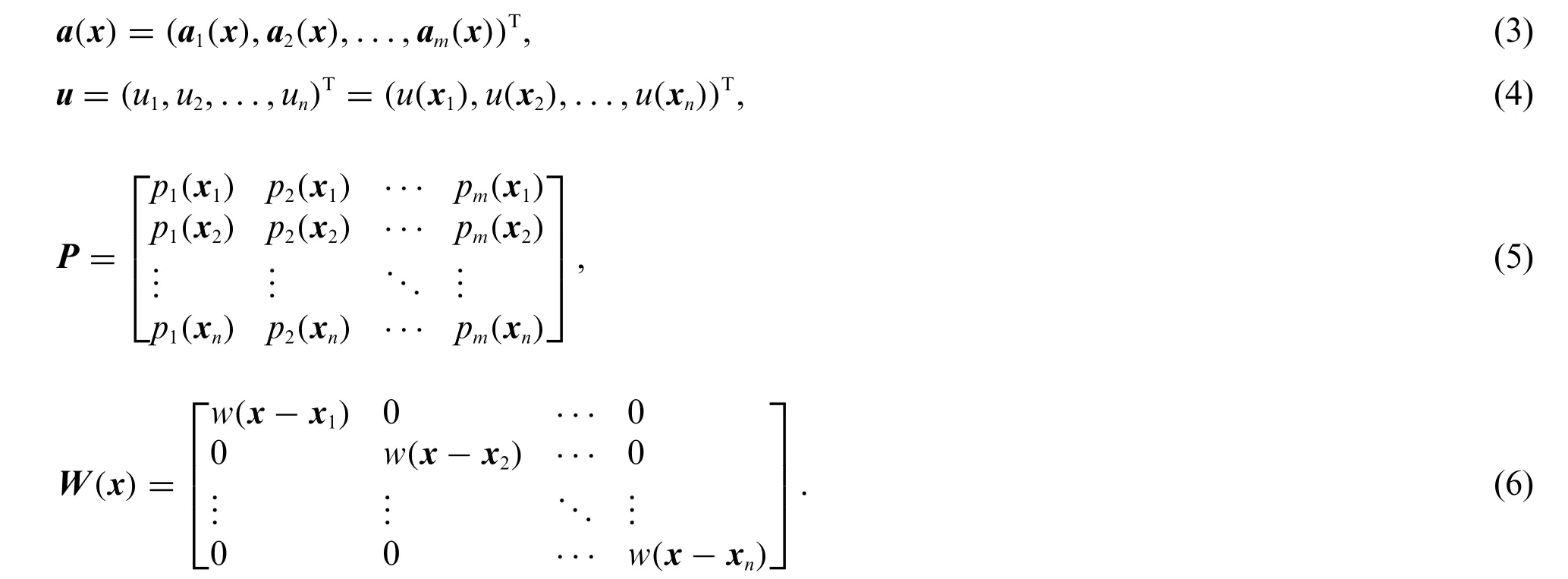
In order to obtaina(x),from

we have

where

Finally,we can obtain the trial functionuh(x)as

whereΦ(x)represents the shape function.We have


For the IMLS method,a set of orthogonal functions is chosen as the basis function.The ill conditioned or singular equations can be avoided.The inverse of the matrix can be obtained directly,which improves the calculation efficiency.
The orthogonal basis functions can be structured by the Schmidt method.For example,basis functions

are orthogonalized to the following orthogonal basis functions.

Eq.(7)can be expressed as

If{pi(x)}(i=1,2,...,m)is a set of orthogonal functions,that is

Eq.(16)becomes to

We can simply have

Then

where

Substituting Eq.(19)into Eq.(11),we obtain

whereΦ*(x)mean the shape function,and

3 The FEFG Method for 3D Elasticity
The equilibrium equation of 3D elasticity is

with the boundary conditions

Then,the elasticity problem composed of Eqs.(24)and(25)and the boundary conditions is solved by the FEFG method.
The 3D problem domainΩis divided intoL+ 1 2D subdomains along directionx3,which is chosen as the splitting direction,that is,L-1 2D planes are inserted intoΩ.And the distance between two adjacent 2D sub-domains isΔx3.That is
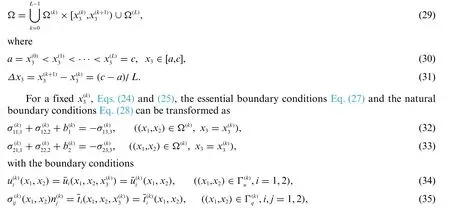

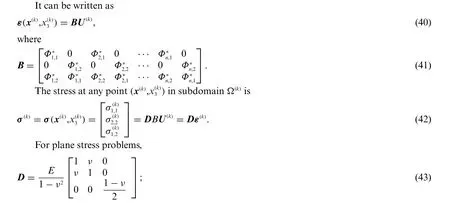

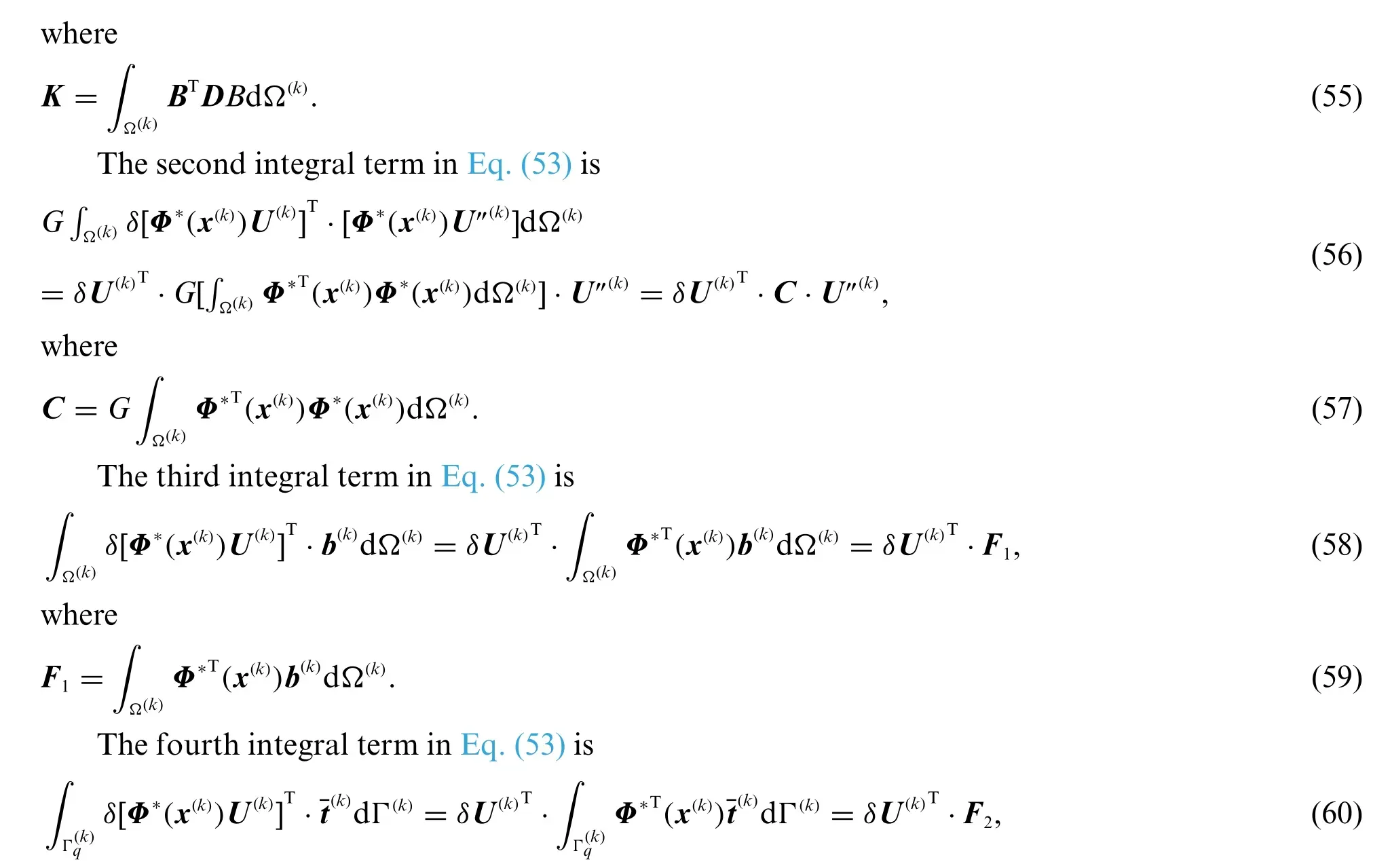


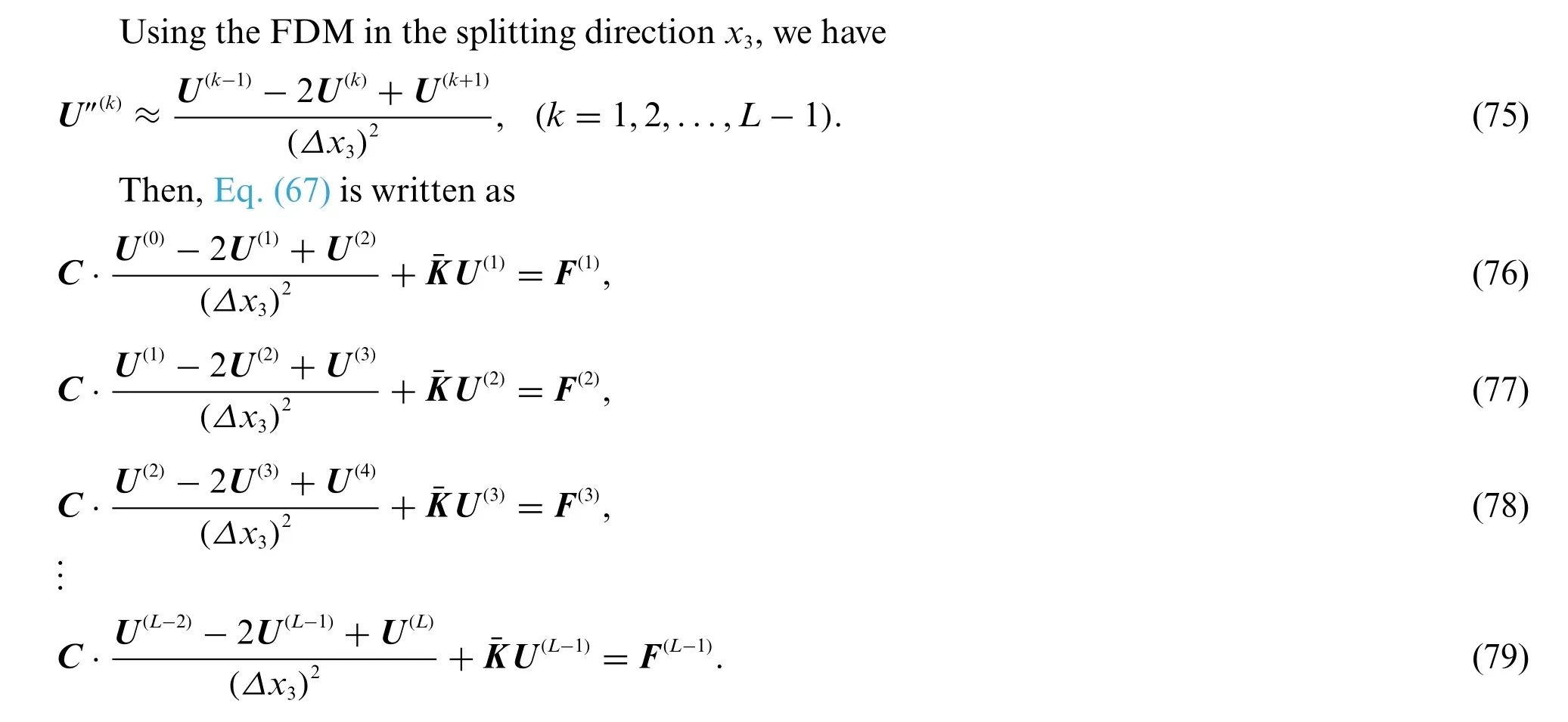


The boundary value problem composed of Eqs.(25)and(26)and the corresponding boundary conditions can also be solved by the FEFG method,and the numerical solutions of displacement in directionx2andx3at each node can be obtained.Finally,we can get the numerical solutions of Eqs.(24)-(28).
In this paper,the FEFG method is for isotropic materials.We think that the FEFG method can also solve 3D linear elasticity for anisotropic materials.As long as the constitutive equations of anisotropic materials are established,the FEFG method can be obtained.It can be used as our later research topic.
4 Numerical Examples
Four related numerical examples are calculated using the FEFG method.The outcomes under different penalty factors,scale parameters and node distributions of the FEFG method are studied.Through comparing the numerical outcomes of the FEFG method with those of the IEFG method,the superiority of the FEFG method for 3D elasticity problems can be found.We can find that the calculation efficiency of the FEFG method is much faster than the IEFG method and the calculation accuracy of the FEFG method is also high.
The relative error is defined as

where

4.1 Cube under Uniformly Distributed Load
The cube was subjected to a uniformly distributed load as shown in Fig.1.The side length is 2 m.The distributed load isσ= 32 MPa,the shear modulus isG= 1,5000 MPa and Poisson’s ratio isν=0.25.The analytical solution of displacement is given as


Figure 1:A cube under a uniformly distributed load
Using the IEFG method to solve this problem,11×11×11 node distributions are selected,the influence domain factordmax= 1.1,and the penalty factorα= 1.0×1019.Then,the CPU running time is 12.78 s.The overall relative error is 3.0685×10-9.The relative errors of the displacement in directionx1,x2andx3are 3.1907×10-12,3.4556×10-12and 3.1689×10-9,respectively.
Then,the FEFG method is used to solve this problem.Directionx1is chosen as the splitting direction.Nine planes are inserted along directionx1,and 11×11 nodes are evenly distributed on the planeOx2x3.In addition,dmax= 1.03 andα= 1.0×1022.Then,the CPU running time is 0.64 s.The overall relative error is 9.9904×10-12.The relative errors of the displacement in directionsx2andx3are 2.2208×10-12and 4.0222×10-11,respectively.The parameter selection makes the FEFG method optimal.
Table 1 shows the calculation accuracies and CPU running times of the FEFG and IEFG methods whendmaxis different.11 × 11 × 11 node distributions were selected.In order to achieve high calculation accuracies for every method,dmax= 1.1 for the IEFG method anddmax= 1.03 for the FEFG method.

Table 1:The relative error norms and CPU times of the FEFG and IEFG methods under different dmax
Fig.2 shows thatdmaxhas great influence on the error.In this paper,we choosedmax=1.03 for the FEFG method.
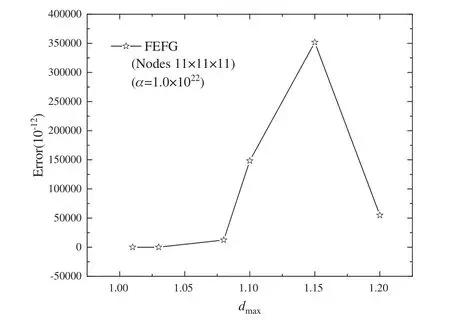
Figure 2:The error of the FEFG method with different dmax
Table 2 shows the calculation accuracies and CPU running times of the FEFG and IEFG methods when the node distributions are different.We find that the calculation accuracies of the IEFG and FEFG method are both very high for this problem.However,the calculation time of the FEFG method is much shorter than that of the IEFG method.In this case,we set the node distribution is 11×11×11.

Table 2:The relative error norms and CPU times of the FEFG and IEFG methods under different node distributions
Table 3 illustrates the calculation accuracies and CPU running times of the FEFG method when the penalty factorαis different.Theαhas a great influence on the numerical results.Then the appropriate coefficient can be selected to obtain higher calculation accuracy.Fig.3 illustrates the error of the FEFG method under differentα.In this paper,we chooseα=1.0×1022for the FEFG method.

Table 3:The relative error norms and CPU times of the FEFG method under different penalty factors α
Figs.4-6 are the results of displacementu1,u2andu3of the FEFG method,IEFG method and analytical solution along directionx1,x2andx3,respectively.We find that the two methods are very consistent with the analytical results and the FEFG method is faster than the IEFG method.
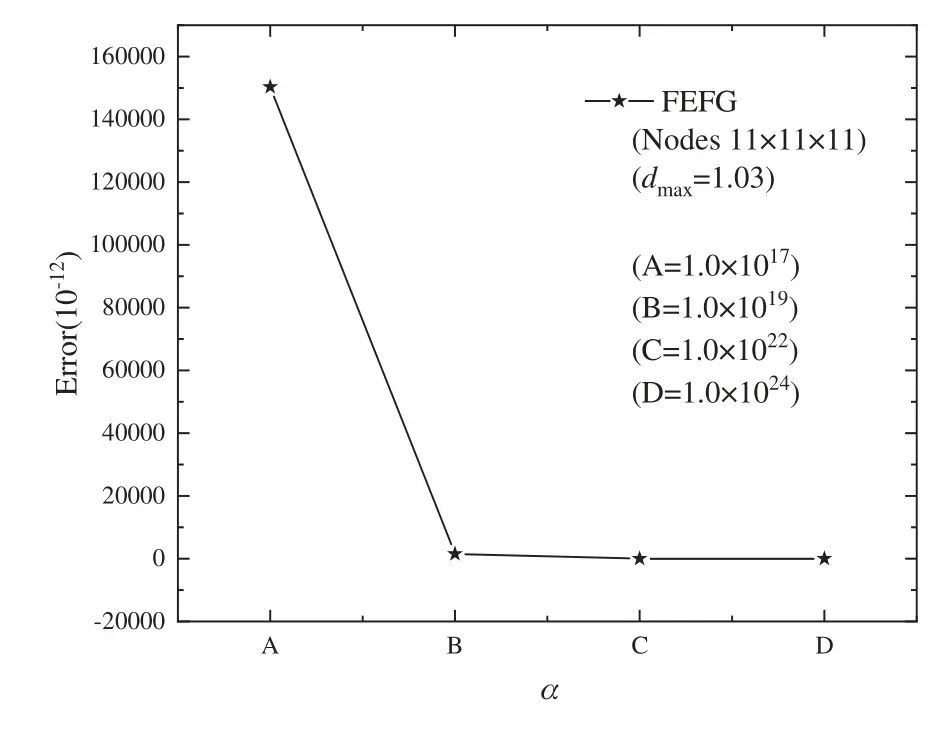
Figure 3:The error of the FEFG method is distributed with α

Figure 4:The distribution of the displacement u1 along x1
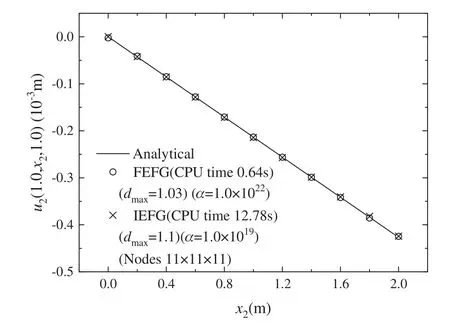
Figure 5:The distribution of the displacement u2 along x2

Figure 6:The distribution of the u3 along x3
4.2 Prismatic Bar Considering Its Own Weight
Suppose the gravity of the bar per unit volume isρgas shown in Fig.7.The body force are

The stresses are

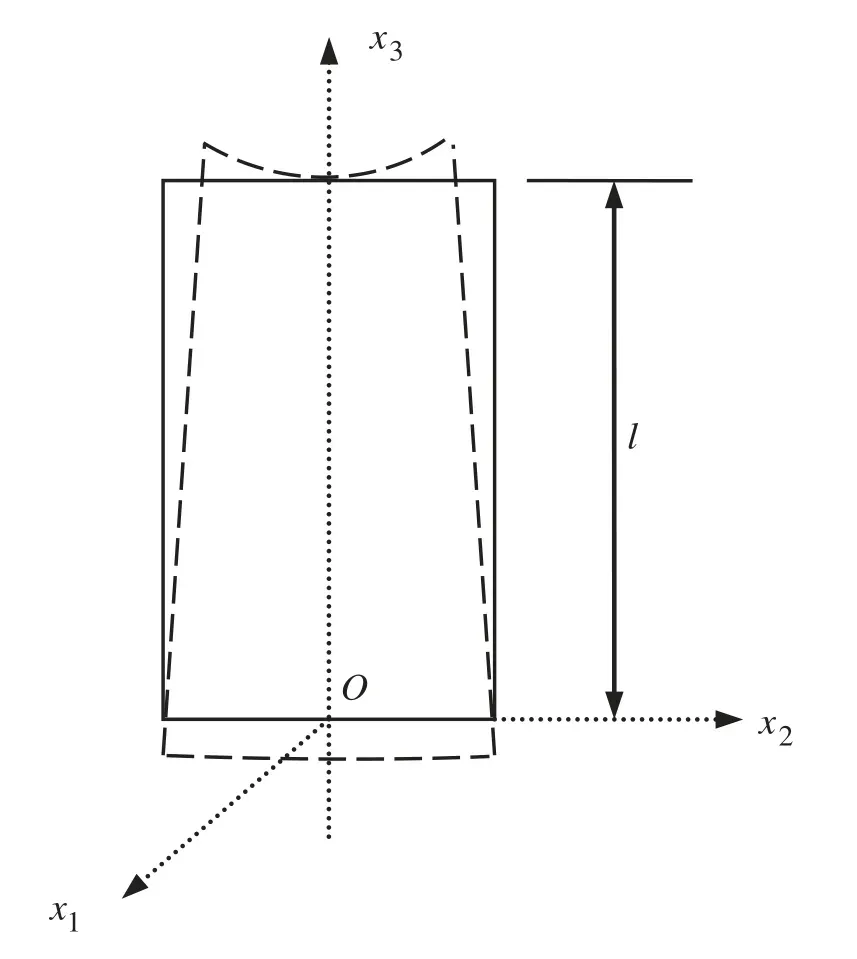
Figure 7:Prismatic bar
The geometrical size of the bar is 12 mm × 12 mm × 36 mm,poisson’s ratio isν=0.15,density isρ= 2405 kg/m3and the Young’s modulus isE= 2.069×104MPa.The analytical solution of the displacement field is

Adopting the IEFG method to solve this problem,the node distribution is 5×5×11,dmax=1.1,andα=1.0×1020.Then,the CPU running time is 44.53 s.The overall relative error is 6.1758×10-3.
Next,the FEFG method is used to solve this problem.Directionx1is the splitting direction.Three planes are inserted along directionx1.On planeOx2x3,5×11 mesh nodes are selected evenly anddmax= 1.1,α= 1.0 × 1020.Then,CPU running time is 0.38 s.The overall relative error is 3.3713×10-3.It can be seen that the FEFG method can notably increase the computing efficiency.
Figs.8-10 are comparison of displacementsu1,u2andu3along directionx1,x2andx3by the FEFG and IEFG methods with analytical solutions.Fig.11 is the calculation results of stressσ33by the FEFG method,the IEFG method and the analytical solution alongx3.We find that the two methods are very consistent with the analytical results and the FEFG method is faster than the IEFG method.

Figure 8:The distribution of displacement u1 along x1

Figure 9:The distribution of displacement u2 along x2

Figure 10:The distribution of displacement u3 along x3
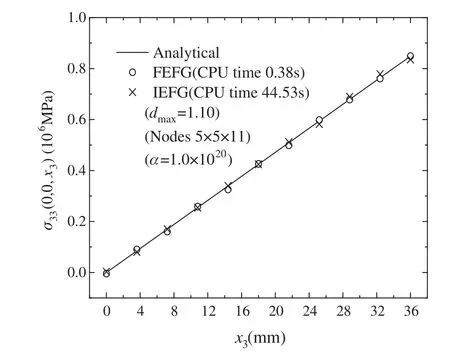
Figure 11:The distribution of normal stress σ33 along x3
Fig.12 shows the relationship between stressσ33and strainε33at point(0,0,x3)by the FEFG method,the IEFG method and the analytical solution.We can find that the numerical solutions agree well with the analytical solutions.

Figure 12:The effect of stress σ33 along strain ε33
4.3 3D Semi-Infinite Solid
For a 3D semi-infinite solid in Fig.13,x3=0 is its boundary,and the displacement and stress are caused by a distributed load.The weight per unit volume isρg.The body forces are

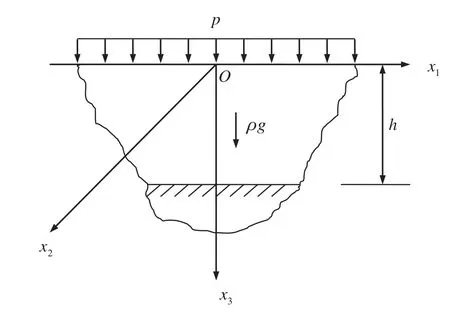
Figure 13:3D semi-infinite solid
In addition,p= 1 MPa,ρ= 2405 kg/m3,v= 0.15,andE= 2.069×104MPa.Here,pis the ratio of the pressure per unit area in planeOx1x2,ρis the density,vis the Poisson’s ratio andEis the Young’s modulus.The analytical results of this case are


After selecting a cuboid 300 meters long,300 meters wide and 100 meters high,the IEFG method is used to solve this problem,and 6×6×9 mesh nodes are selected.dmax=1.14,andα=2.8×1018.Then,the CPU running time is 5.75 s,and the overall relative error norm ofu3andσ33are 0.0982 and 0.1030,respectively.
Next,the FEFG method is selected to solve this problem.The directionx1is the splitting direction.Four planes are inserted along directionx1.On planeOx2x3,6 × 9 nodes are evenly distributed.In addition,dmax= 1.14,andα= 2.8 × 1018.Then,the CPU running time is 0.38 s,and the overall relative error norm ofu3andσ33are 0.0575 and 0.0691,respectively.It can be seen that the FEFG method is much faster and more accurate than the IEFG method in solving theu3andσ33of this case.
Table 4 illustrates the calculation accuracies and CPU running times of the FEFG method and the IEFG method whendmaxis different.In addition,the node distribution is 6×6×9,andα=2.8×1018.It can be seen that the IEFG method and FEFG method both have better computational precision,as shown indmax=1.1-1.2.For this case,we letdmax=1.14.

Table 4:The relative error norms and CPU times of the FEFG and IEFG methods under different dmax
Table 5 illustrates the calculation accuracies and CPU running times of the FEFG with different node distributions.It can be seen that the FEFG method is convergent.For this problem,we choose the integral node distribution is 6×6×9.

Table 5:The relative error norms and CPU times of the FEFG under different node distributions
Table 6 illustrates the calculation accuracies and CPU running times of the FEFG method when the penalty factorαis different.For this case,we chooseα=2.8×1018for the FEFG method.

Table 6:The relative error norms and CPU times of the FEFG method under different penalty factor α
Figs.14-16 show the calculation outcomes of the FEFG method,the IEFG method and the analytical results of displacementu3and the distribution of the normal stressesσ11andσ33along directionx3,respectively.It can be seen that the results of the FEFG method are closer to the analytical solution than those of the IEFG method.
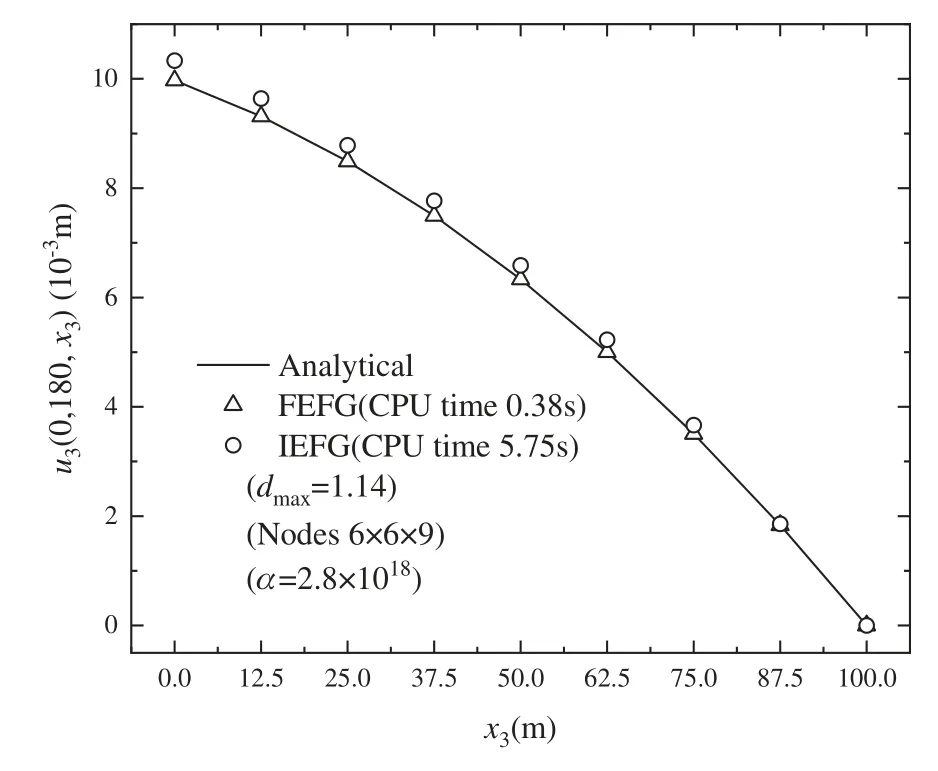
Figure 14:The distribution of the displacement u3 along x3

Figure 15:The distribution of the normal stress σ11 along x3
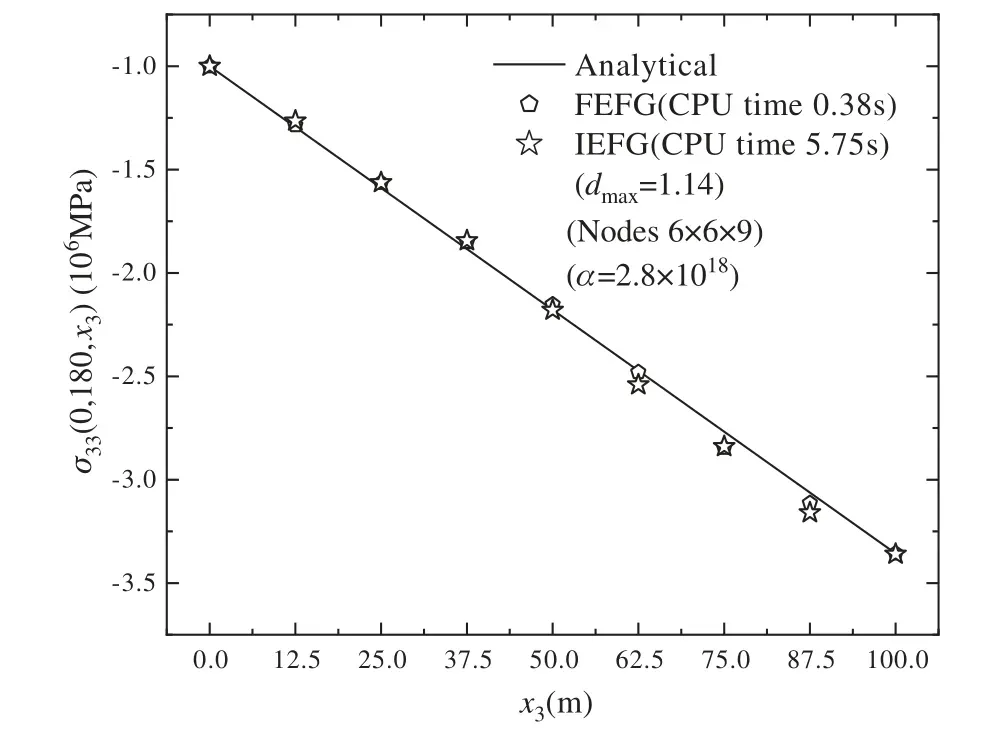
Figure 16:The distribution of the normal stress σ33 along x3
4.4 Hollow Cylinder Subjected to Internal Pressure
Consider a hollow cylinder subjected to uniform internal pressure.Fig.17 shows the quarter region and Fig.18 shows the nodes arrangement on the quarter model on each planeOx1x2.The inner surface is subjected to uniformly distributed pressurep= 1000,Poisson’s radio isv= 0.25,the Young’s modulus isE=1.0×106.The inner and outer radius of the cylinder area=1 m andb=5 m,respectively,and the height of the cylinderh=2.The analytical solution of the problem is

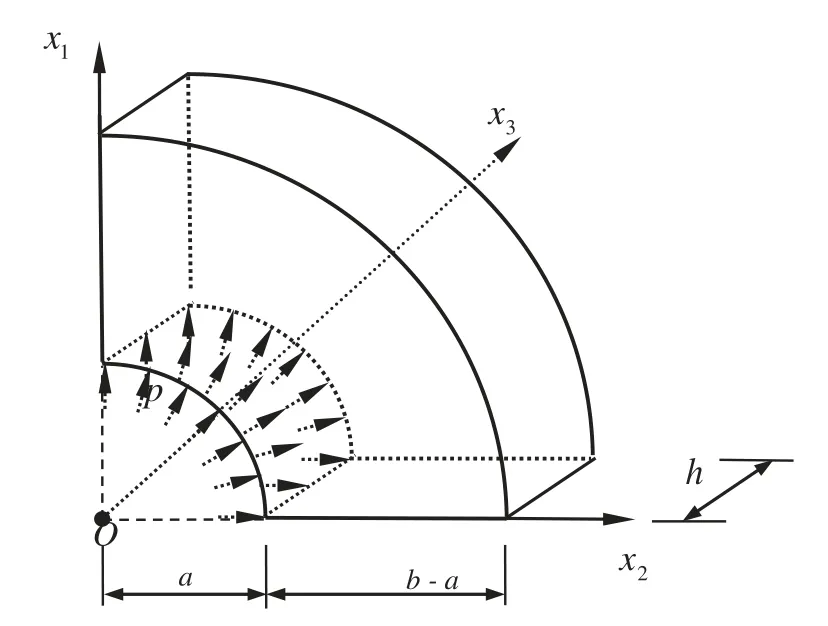
Figure 17:A hollow cylinder under distributed internal pressure

Figure 18:Nodes arrangement on the quarter model on each plane Ox1x2
We only consider a quarter of the problem domain.Selecting the IEFG method to solve this problem,11×11×5 nodes are selected.dmax=1.11 andα=1.9×1015.Then,the CPU running time is 22.71 s,and the overall relative error norm ofur(r)is 2.4458×10-2.
Next,the FEFG method is selected to solve this problem.The directionx3is the splitting direction.Three planes are inserted along directionx3.On planeOx1x2,11×11 nodes are distributed as shown in Fig.18.In addition,dmax=1.11 andα=1.9×1015.Then,the CPU running time is 1.47 s,and the overall relative error norm ofur(r)is similar to that of the IEFG method.It can be seen that the FEFG method is much faster than the IEFG method in solving the solutionur(r)of this case.
Figs.19-21 show the calculation outcomes of the FEFG method,the IEFG method and the analytical results of displacementur,stressσθandσralong directionr,respectively.It can be found that the numerical results obtained by the FEFG method and the IEFG method are in good agreement with the analytical solutions,and the FEFG method runs faster than the IEFG method.
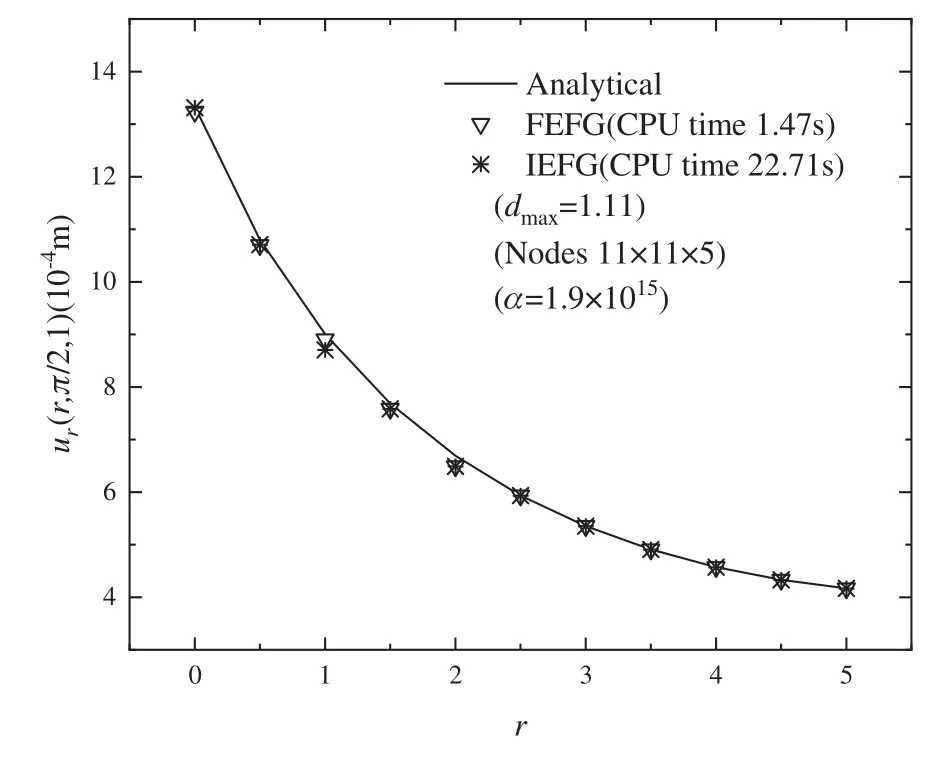
Figure 19:The distribution of the normal displacement ur along r

Figure 20:The distribution of the normal stress σθ along r

Figure 21:The distribution of the normal stress σr along r
5 Conclusions
In this paper,the FEFG method for the 3D elasticity problem is established.The 3D elasticity problems are divided into a set of related 2D problems along the dimension splitting direction.Then,the IEFG method is chosen to solve these 2D problems.The FDM is selected in the dimension splitting direction.The final solvable discrete system equations of the 3D elasticity problem are obtained.In contrast to the IEFG method,the FEFG method saves the computing time of the shape function by reducing the dimensionality.Furthermore,the numerical results of the FEFG method and the IEFG method are both agree with the analytical results.Numerical examples indicate that the FEFG method for three-dimensional elasticity problems is efficient and convergent.
Funding Statement:This work was supported by the National Natural Science Foundation of China(Grant Nos.52004169 and 11571223).
Conflicts of Interest:The authors declare that they have no conflicts of interest to report regarding the present study.
 Computer Modeling In Engineering&Sciences2022年7期
Computer Modeling In Engineering&Sciences2022年7期
- Computer Modeling In Engineering&Sciences的其它文章
- Discrete Element Simulations of Ice Load and Mooring Force on Moored Structure in Level Ice
- Investigation of the Free Vibrations of Radial Functionally Graded Circular Cylindrical Beams Based on Differential Quadrature Method
- Performance Evaluation of Electromagnetic Shield Constructed from Open-Cell Metal Foam Based on Sphere Functions
- Edge Detection of COVID-19 CT Image Based on GF_SSR,Improved Multiscale Morphology,and Adaptive Threshold
- An Optimized Convolutional Neural Network with Combination Blocks for Chinese Sign Language Identification
- Image Encryption Algorithm Based on New Fractional Beta Chaotic Maps
